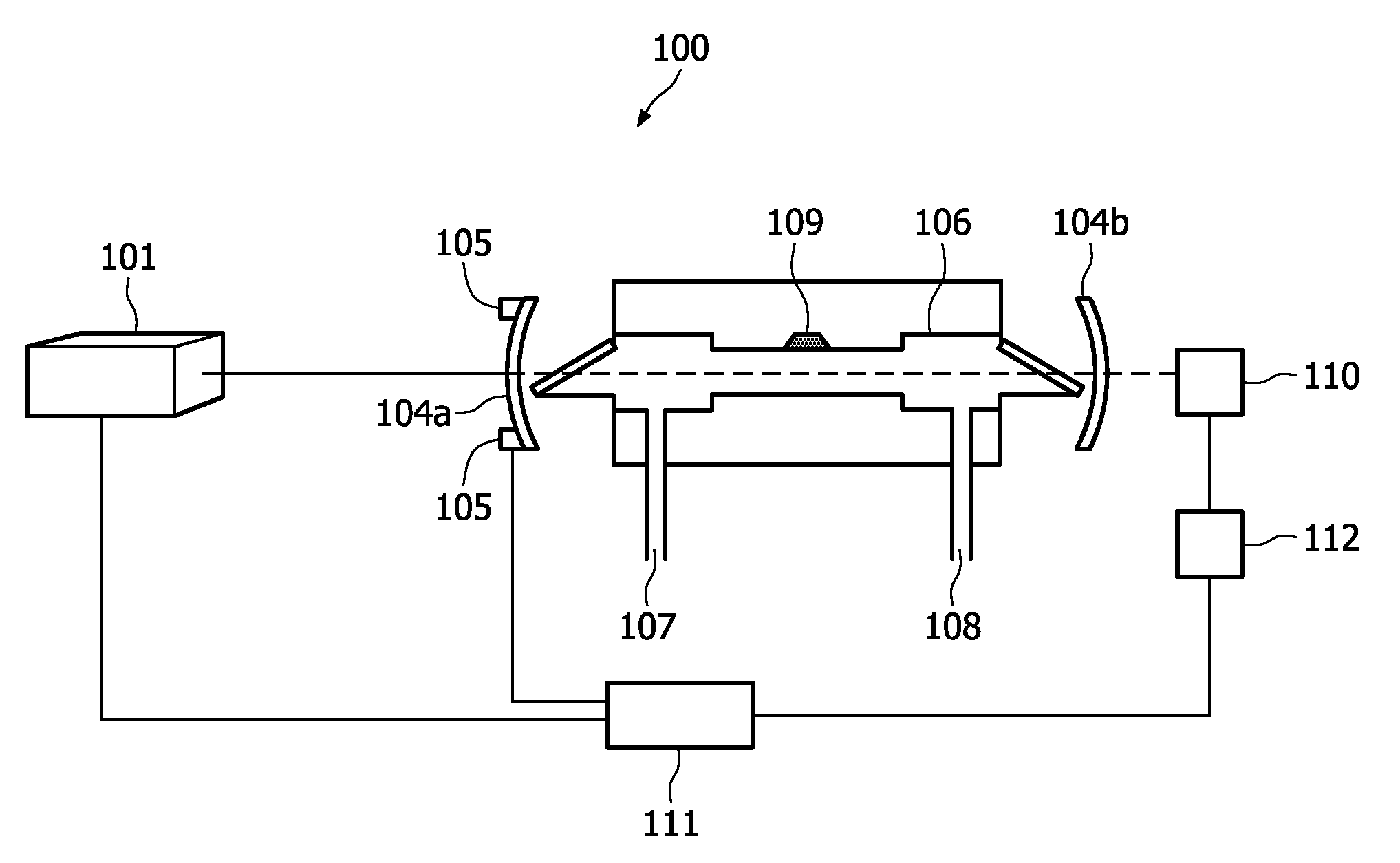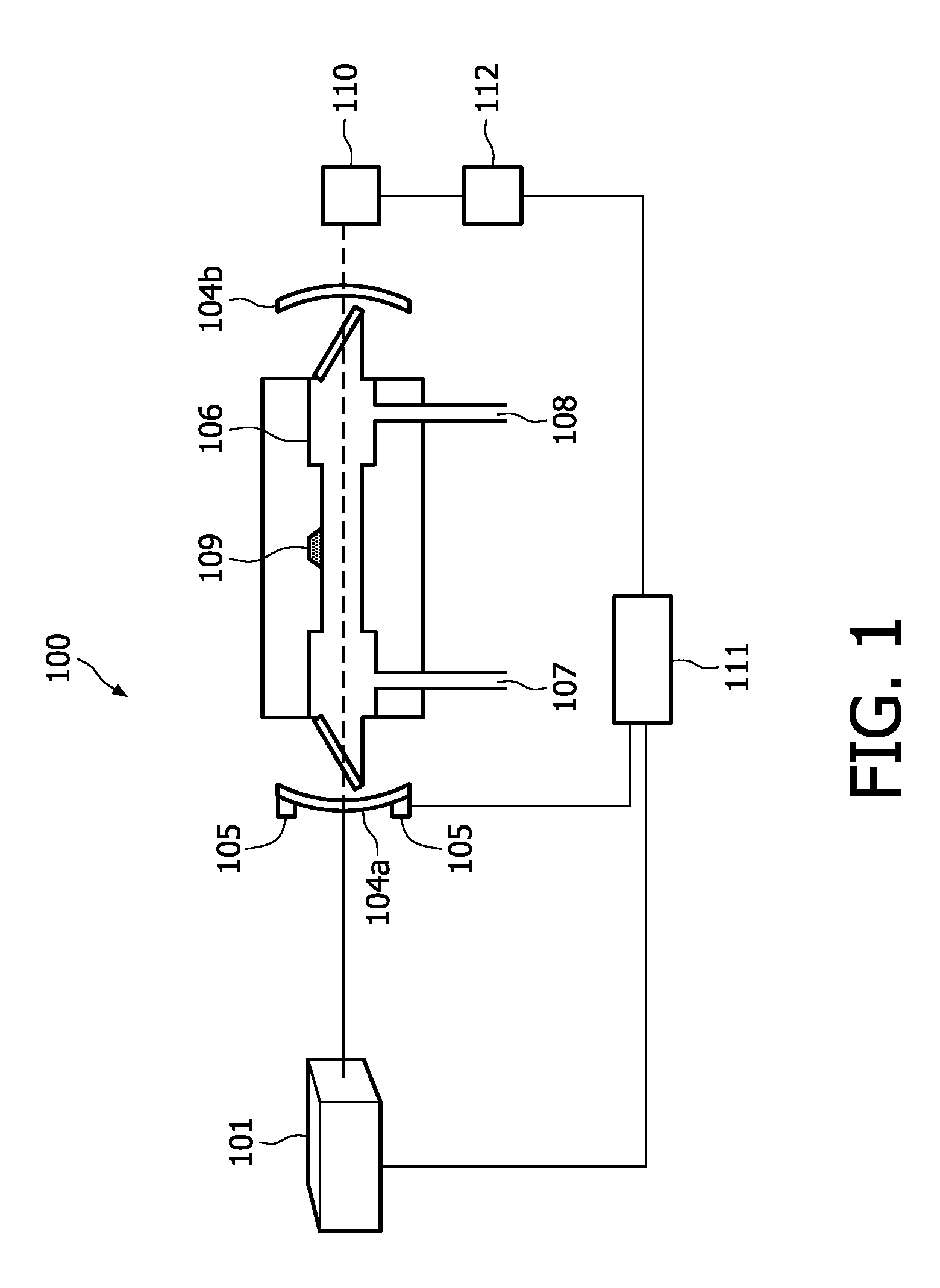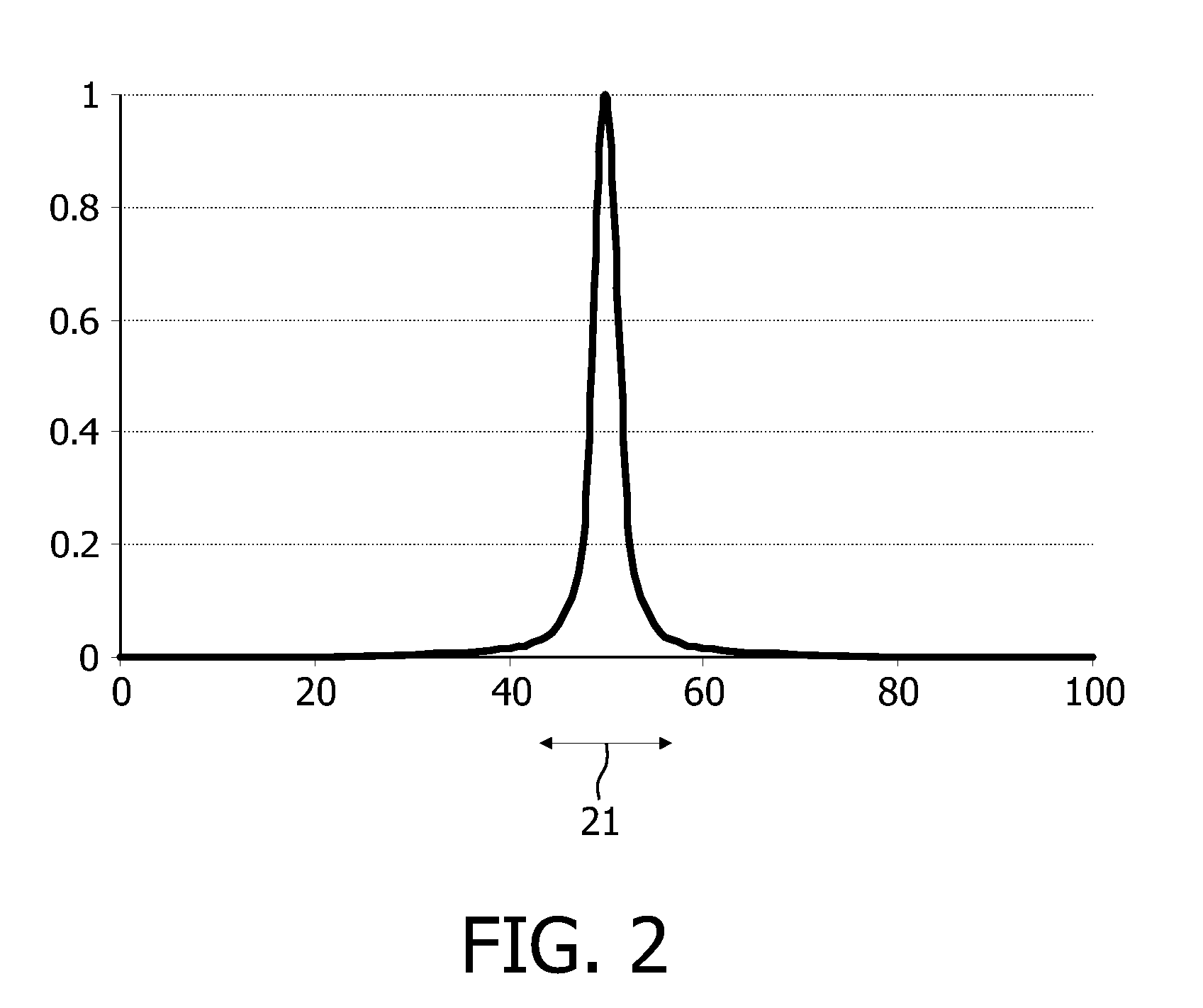Stable photo acoustic trace gas detector with optical power enhancement cavity
a photo acoustic trace and optical power enhancement technology, applied in the field of photo acoustic trace gas detectors, can solve the problems of increasing thermal energy, increasing the temperature and pressure inside the acoustic cell, and unable to measure exhaled levels at ppb concentrations using expensive and bulky equipment, and achieves the effect of simple design
- Summary
- Abstract
- Description
- Claims
- Application Information
AI Technical Summary
Benefits of technology
Problems solved by technology
Method used
Image
Examples
Embodiment Construction
[0026]FIG. 1 shows a typical photo acoustic trace gas detector 100 according to the invention. A light source 101 provides a continuous wave light beam. Preferably, the light source 101 provides a laser beam. The light beam is sent into an optical cavity, which is defined by two semi-transparent mirrors 104a and 104b. The light beam enters the optical cavity through input mirror 104a and is reflected many times between the two cavity mirrors 104a and 104b. If the distance between the two mirrors 104a and 104b matches the wavelength of the laser, standing waves occur and the light intensity is amplified. An actuator, e.g. a piezo electric actuator 105, attached to one of the cavity mirrors 104a, 104b is used for modulating a length of the optical cavity. By modulation of the length of the optical cavity, the ratio of the laser wavelength and the cavity length is modulated. Maximum amplification of the light intensity is achieved at a resonance value for the ratio. Modulation electron...
PUM
| Property | Measurement | Unit |
|---|---|---|
| chopping frequency | aaaaa | aaaaa |
| concentration | aaaaa | aaaaa |
| length | aaaaa | aaaaa |
Abstract
Description
Claims
Application Information
 Login to View More
Login to View More - R&D
- Intellectual Property
- Life Sciences
- Materials
- Tech Scout
- Unparalleled Data Quality
- Higher Quality Content
- 60% Fewer Hallucinations
Browse by: Latest US Patents, China's latest patents, Technical Efficacy Thesaurus, Application Domain, Technology Topic, Popular Technical Reports.
© 2025 PatSnap. All rights reserved.Legal|Privacy policy|Modern Slavery Act Transparency Statement|Sitemap|About US| Contact US: help@patsnap.com



